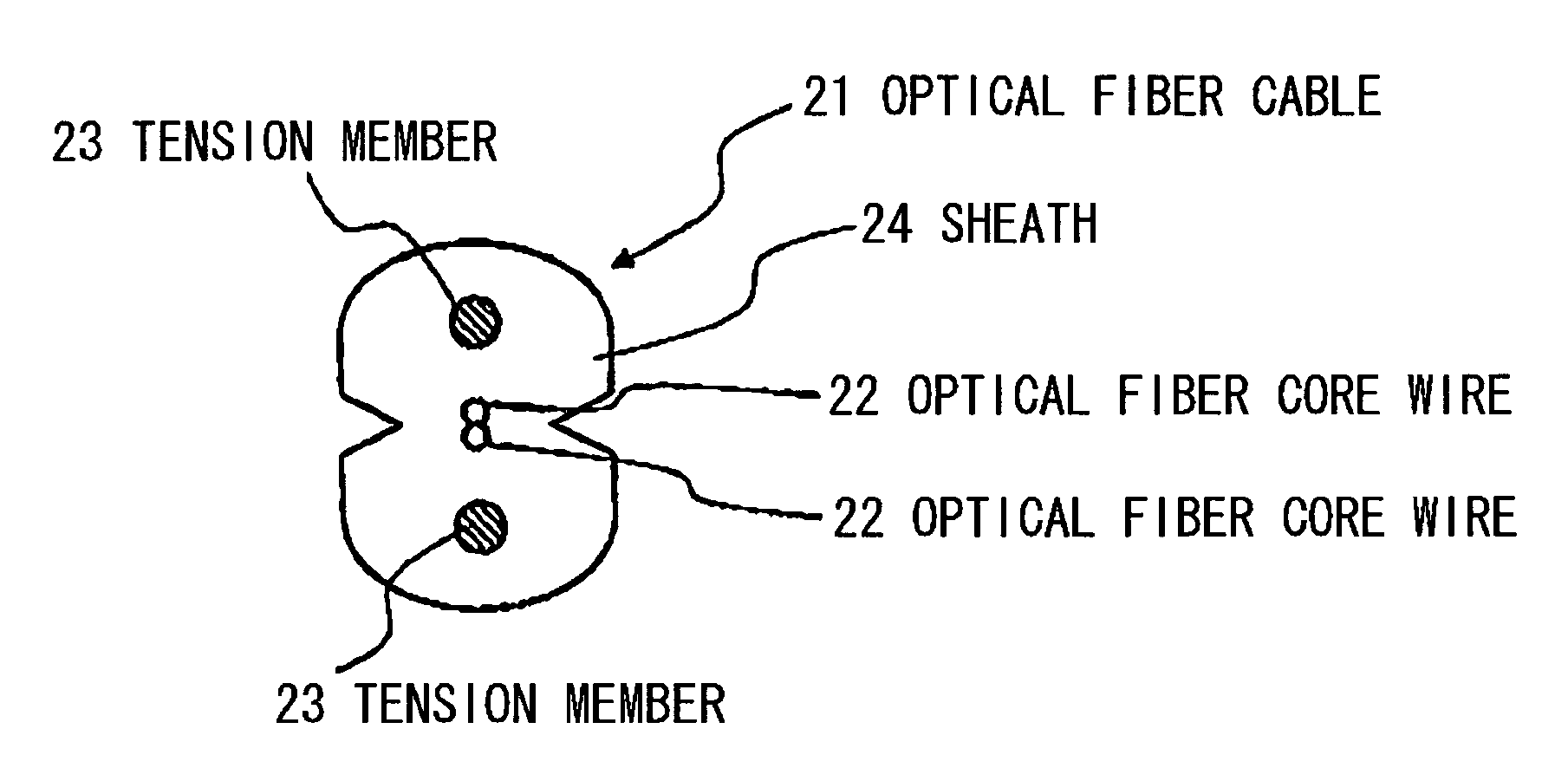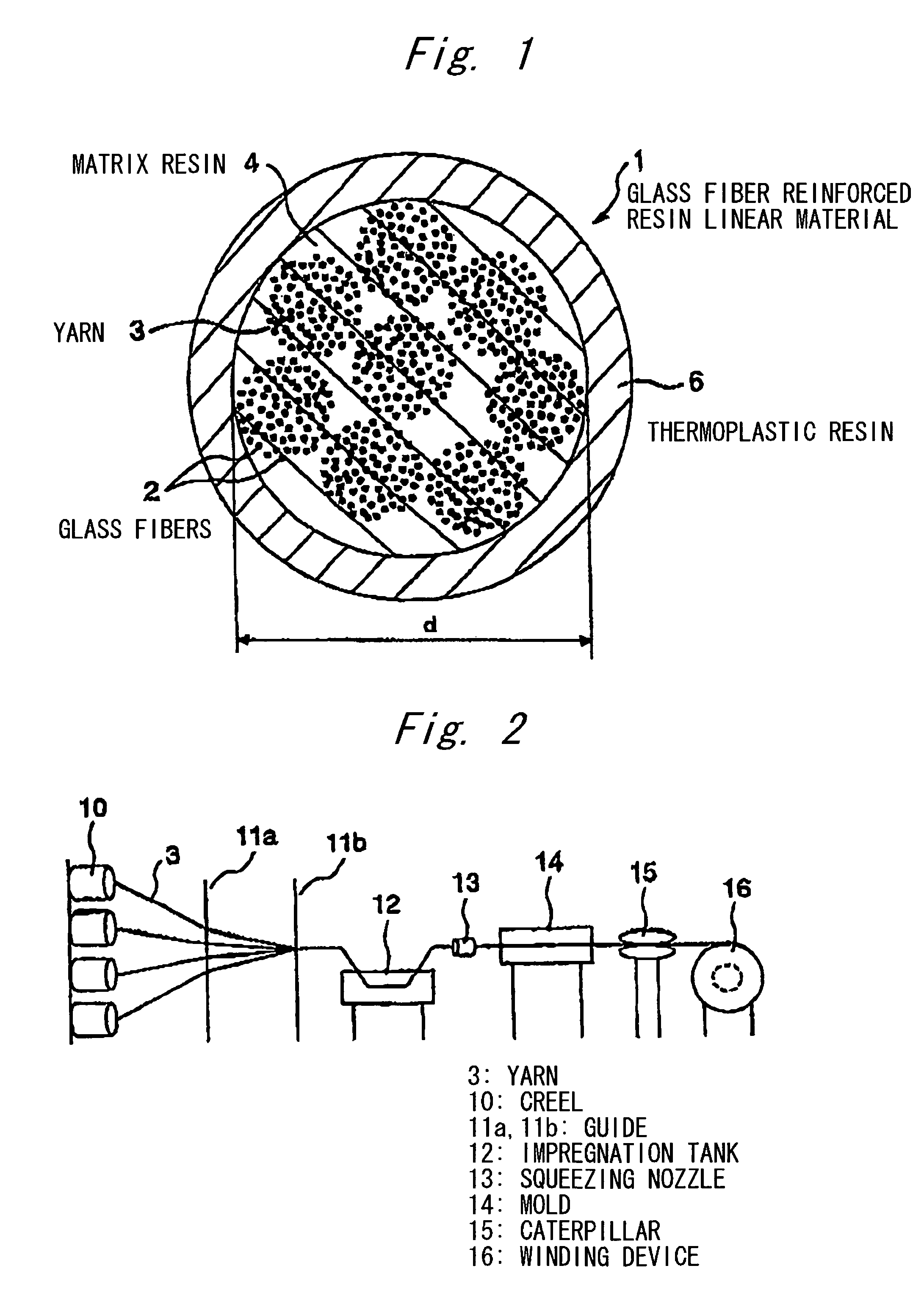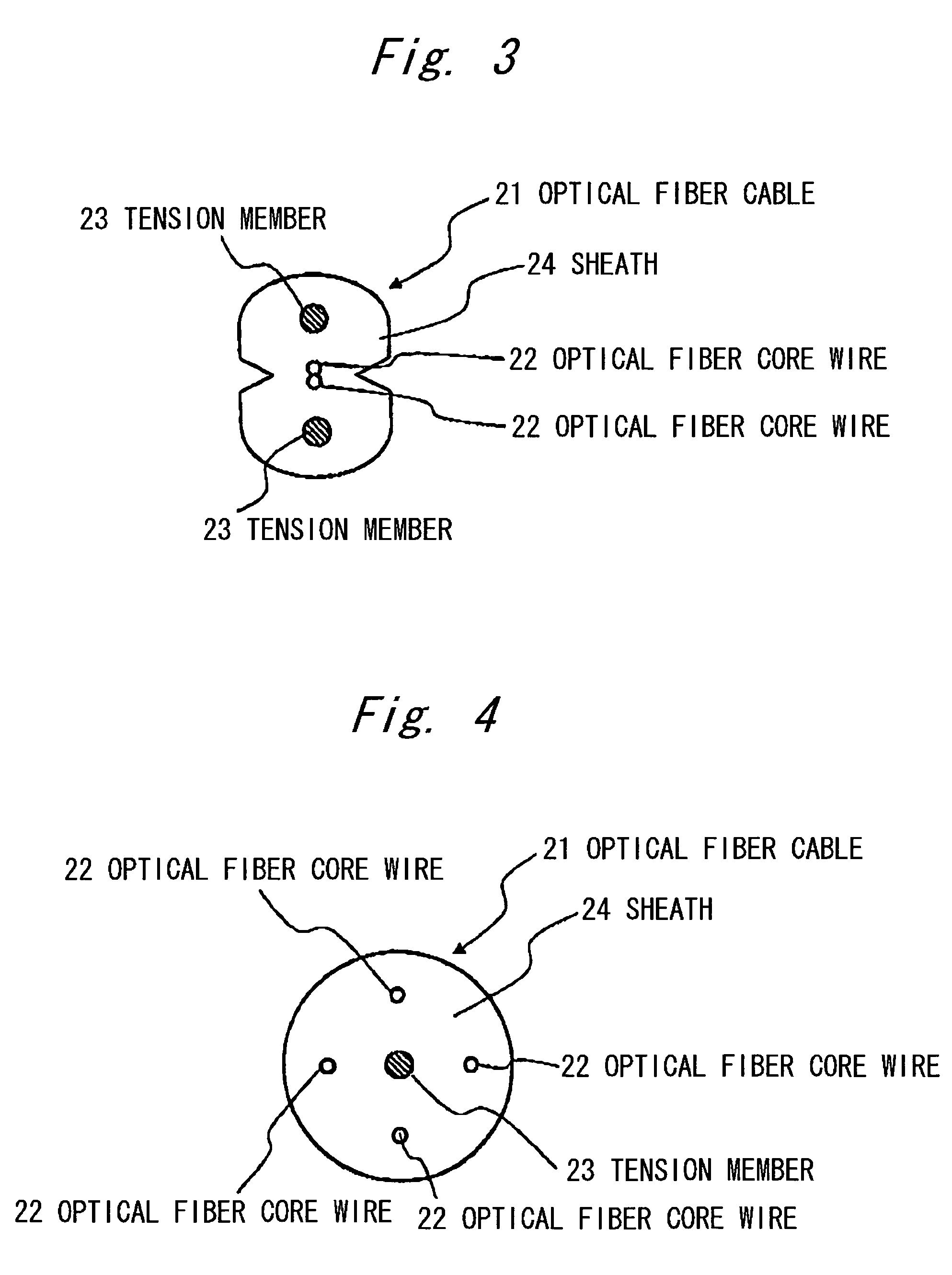Optical fiber cable
a technology of optical fiber and fiber cable, which is applied in the direction of optical waveguide light guide, fibre mechanical structure, instruments, etc., can solve the problems of low viscosity of uncured matrix resin composition, inability to bring the curing time to not less than 10 min, and inability to achieve high flexibility of glass fiber reinforced resin tension members, etc., to achieve excellent bending properties and flexibility, excellent bending properties
- Summary
- Abstract
- Description
- Claims
- Application Information
AI Technical Summary
Benefits of technology
Problems solved by technology
Method used
Image
Examples
examples
[0132]The invention will be explained in more detail with reference to the following examples. However, the invention is not limited to these examples only.
examples 1 to 3
[0133]High-strength glass fibers sold by Nitto Boseki Co., Ltd. (tradename “T-GLASS,” elongation at break 0.5.5%, modulus of elasticity 84.3 GPa) were provided. T-GLASS contained 65% by weight of SiO2, 23% by weight of Al2O3, 11% by weight of MgO, and less than 1% by weight of ZrO2. Detailed specifications of the high-strength glass fibers are shown in Table 1.
[0134]
TABLE 1ElasticFiberTensilemodulus inElongationProductCountTreatmentdiameterDensitystrengthtensionat breakRST28280 g / kmEpoxysilane7 μm2.49 g / cm34.65 GPa84.3 GPa5.5%PA-535treatment
[0135]Expoxy resin produced in the presence of a thermal cationic polymerization catalyst was used as matrix resin. Formulations of Examples 1 to 3 are shown in Table 2.
[0136]
TABLE 2ComponentEx. 1Ex. 2Ex. 3(1)CELLOXIDE 2021P804056(2)CELLOXIDE 2081—4024(3)Epikote 1002202020(4)SD551101010(5)SI-100L111(6)ST86PA (antifoaming agent)0.010.010.01
[0137]CELLOXIDE 2021P and CELLOXIDE 2081, which are liquid epoxy resin, were obtained from Daicel Chemical In...
examples 4 and 5
[0146]The dimension of a mold was changed according to the combination of the matrix resin with the glass fibers in Example 3 to mold a glass fiber reinforced resin composition having an outer diameter of 0.42 mm (Example 4) and a glass fiber reinforced resin composition having an outer diameter of 0.51 mm (Example 5). In the same manner as in Examples 1 to 3, the minimum bending diameter was measured and was found to be 7.0 mm and 9.0 mm which were respectively 16.7 times and 17.6 times larger than the diameter of the linear materials.
PUM
| Property | Measurement | Unit |
|---|---|---|
| elongation at break | aaaaa | aaaaa |
| viscosity | aaaaa | aaaaa |
| mode field diameter | aaaaa | aaaaa |
Abstract
Description
Claims
Application Information
 Login to View More
Login to View More - R&D
- Intellectual Property
- Life Sciences
- Materials
- Tech Scout
- Unparalleled Data Quality
- Higher Quality Content
- 60% Fewer Hallucinations
Browse by: Latest US Patents, China's latest patents, Technical Efficacy Thesaurus, Application Domain, Technology Topic, Popular Technical Reports.
© 2025 PatSnap. All rights reserved.Legal|Privacy policy|Modern Slavery Act Transparency Statement|Sitemap|About US| Contact US: help@patsnap.com



